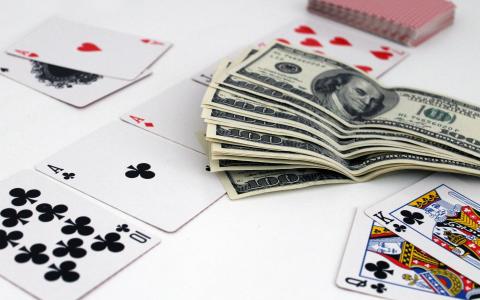
(Yahoo! Finance) - Markets widely expect the Federal Reserve to cut interest rates for the fourth time this year at its December meeting. The question is what the central bank will do next year.
Recent sticky inflation prints and evidence the US economy is growing at a solid pace have raised doubts that the Fed will bring down rates as quickly as it previously indicated. In September, the Fed's Summary of Economic Projections (SEP) projected four interest rate cuts next year.
Markets are currently projecting roughly two cuts in 2025, per Bloomberg data. The Fed is scheduled to release an updated forecast on Dec. 18.
While they differ on the specifics, Wall Street economists generally agree that the central bank's current rapid pace of rate cuts won't continue.
"As we head into 2025, we're likely to see a slower pace of cutting going forward, where the Fed likely moves to an every other meeting sort of pace," Wells Fargo senior economist Sarah House, whose team sees three interest rate cuts in 2025, said during a media roundtable on Nov. 21.
At a current range of 4.5% to 4.75%, there's little debate over whether the fed funds rate is restrictive. This has prompted many economists to believe further easing is likely in the pipeline as the Fed continues to aim for a "soft landing" where inflation falls to its 2% target without a significant downturn in the economy.
With the US economy growing at a solid pace and concerns of a labor market slowdown on the back burner for now, the sticking point in the debate is just how much the Fed will lower rates over the next year without seeing significant improvement in inflation data.
Deutsche Bank chief US economist Matthew Luzzetti sees the Fed cutting once more in December before pausing its interest rate adjustments for all of 2025 as it waits for more progress on the inflation front.
"There's a lot less urgency to cut rates," Luzzetti told Yahoo Finance. "It might make sense to slow the pace of rate cuts earlier than they expected."
Inflation progress stalls
In recent months, inflation's progress toward the Fed's 2% target has "stalled," Fed governor Michelle Bowman said in a recent speech when making the case for the central bank to proceed "cautiously" with rate cuts.
The latest reading of the Federal Reserve's preferred inflation gauge showed price increases were flat in October from the prior month. On Wednesday, the core Personal Consumption Expenditures (PCE) index showed prices increased 2.8% from the year prior in October, well above the Fed's goal.
This followed two other sticky readings of inflation that added to the debate over how deeply the Fed will cut rates in 2025.
House said that if inflation's decline slows, "it's going to be harder and harder to justify additional rate cuts."
Fed officials discussed a similar outcome during their November meeting.
"Some participants noted that the Committee could pause its easing of the policy rate and hold it at a restrictive level if inflation remained elevated," the Fed's minutes read.
Economists at both Morgan Stanley and JPMorgan see the Fed's path similarly to House and Wells Fargo, which would leave the fed funds rate in a range of 3.5% to 3.75% at the end of 2025.
"Given slowing disinflation and ebbing employment risks, we think this means the Fed slows the cutting cycle to once per quarter, until indefinitely pausing after reaching a target range of 3.5-3.75% at next September’s FOMC meeting." JPMorgan chief US economist Michael Feroli wrote in his 2025 economic outlook.
Morgan Stanley chief global economist Seth Carpenter sees a similar scenario where the Fed cuts to that same range by May and then pauses interest rate cuts until 2026 amid "signs of sticker inflation and overall policy uncertainty."
EY chief economist Greg Daco told Yahoo Finance part of the reason the Fed would pause rate cuts is to ensure it doesn't cut rates so far that its interest rate policy is "expansionary." Given that the US economy is currently considered to be on solid footing, too much help from interest rate reductions could reignite concerns that a red-hot US economy is keeping inflation sticky.
"They want to avoid a situation where, by easing too rapidly, they go below [the neutral interest rate], and suddenly monetary policy is expansionary," Daco said. The neutral rate is the level at which interest rates are viewed as neither restrictive nor supportive of economic activity.
A new wrinkle
Many economists share Carpenter's concern over "policy uncertainty" headed into 2025 as the new Trump administration enters the Oval Office.
Deutsche Bank's Luzzetti told Yahoo Finance that this uncertainty is different than the pandemic reopening changes that altered every economic data point and therefore challenged the overall economic outlook. This time around, the murky outlook is tied specifically to the details of President-elect Donald Trump's policies and the timing with which they are enacted.
While the difference between what Trump has said before gaining control of the White House and what policies actually come to fruition remains to be seen, consensus sees various versions of his tariff policies as additive to inflation. And that could be a challenge for the Fed, which is already battling sticky price increases.
When accounting for the various policies, Deutsche Bank estimates the US economy will grow at an annualized rate of 2.5% in 2025, with the rate of unemployment ending the year at 3.9% (down from 4.1% currently) and the Fed's preferred inflation gauge, "core" Personal Consumption Expenditures (PCE), ending 2025 at 2.6%.
"From the Fed's perspective, you have stronger growth, a stronger labor market, and higher inflation ... So all of those things combined just kind of had to have a hawkish implication for the Fed outlook," Luzzetti said.
By Josh Schafer - Reporter



